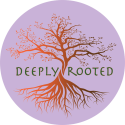There is no single cause for depression, so there cannot be a single solution for your mental wellness. That is important. When we believe that there is “a solution” to depression, we may become discouraged when that reported solution doesn’t make us well. We may feel that we are beyond healing.
The truth is that you may need to approach mental health from several angles to get lasting results. Fortunately, you can work with your trusted clinician to safely implement natural remedies for depression.
Get to Know Your Feel Good Chemicals
There are six major “feel good” chemicals that impact our sense of well-being. Chemical imbalances may result in depression symptoms.
Below is a quick overview of our feel good chemicals, accompanied by common symptoms of imbalance. You will then find practical, holistic ways to promote balance. Discuss these options with your trusted clinician.
1. Dopamine
Dopamine is commonly called the “reward molecule.” Dopamine encourages us to seek pleasure and pursue activities that offer a reward.
When our bodies do not adequately produce and use dopamine, depression may present as a range of symptoms related to mood, sleep, memory, learning, concentration, and motor control.
To promote healthy dopamine levels, consider nutrient supplements. Increased levels of vitamin D, magnesium, and omega-3 essential fatty acids boost dopamine levels.
You can also supplement your care plan with activities that offer positive rewards. Learning a new skill or hobby may be what you need to naturally boost dopamine levels.
Some find it beneficial to take up a yoga or meditation practice, which helps your brain form new neural pathways. Learning something new rewards us with a sense of accomplishment.
2. Oxytocin
Oxytocin is commonly called the “bonding molecule.” Oxytocin helps us feel intimacy, trust, and loyalty. In many cases, low oxytocin can be the result of attachment issues that developed in our youth. Trauma, especially childhood trauma, is a common factor in oxytocin deficiency. It can be helpful to explore these issues with your trusted clinician.
When our bodies do not produce or use oxytocin properly, depression may present symptoms that affect our ability to relate to others. The results may be apathy, antisocial tendencies, and the inability to form deep or lasting relationships.
To boost oxytocin, make healthy human contact. (Interactions via social media and electronic devices are not as effective as being in the presence of another human being.) Face-to-face interaction and skin-to-skin contact are effective for releasing oxytocin. Attending social events and group activities may promote the release of oxytocin. If social interactions are difficult for you, your trusted clinician may have helpful advice.
It is also essential to reduce your cortisol levels. Cortisol and oxytocin counteract one another. By reducing stress, you can decrease cortisol and promote an increase in oxytocin.
3. Endorphin
Endorphins are regarded as the ‘pain-killing molecules.’ Our bodies release endorphins during exercise, intercourse, and creative pursuits.
Endorphin deficiency is not well understood. When we are low on endorphins, depression may present as low moods, impulsive behaviors, anxiety and chronic pain.
To promote the release of endorphins, supplement your care plan with acupuncture, meditation, and aromatherapy. Conveniently, consuming your favorite foods is also an effective way to release endorphins.
4. Serotonin
Serotonin is the “safe and social molecule” that influences our sense of confidence, belonging, and purpose. The chemical contributes to regulating our mood, sleep, appetite, and digestion.
The latter two are particularly important. Our gut produces about 95 percent of our serotonin. Poor gut health (especially chronic inflammation) can lower serotonin levels.
When we are low on serotonin, depression symptoms may include imbalances in our mood, low quality of sleep, poor appetite or disordered eating behaviors.
Re-evaluating your diet can be a helpful step in resolving a serotonin deficiency. Speak with a nutritionist or dietitian about changes in your diet. Varying your food intake can reduce gut inflammation and promote a healthy balance of flora, acids, and hormones.
To improve serotonin release and uptake, it helps to engage in activities that build confidence, camaraderie, and the satisfaction of fulfilling a purpose. Your trusted clinician can help you brainstorm your options. It may be helpful to refine your existing talents or participate in activities with people with which you have common ground.
5. Adrenaline
Adrenaline is commonly called the “energy molecule” that sends signals to our heart to increase blood pressure and heart rate. It contributes to a sense of empowerment, capability, and the feeling that we are thriving.
When we face adrenal imbalances, we may feel fatigued, irritable, experience hypoglycemia and low blood pressure.
To ignite the release of adrenaline, supplement your care plan with healthy activities that cause your muscles to contract and your breathing to become rapider. These physical changes queue the release of adrenaline.
You might consider power walking, vinyasa yoga, or quick breathing exercises such as kapalabhati. Integrate such activities each day to support healthy adrenaline levels.
7. GABA
GABA is one of the least popular molecules but it plays an important role in wellness. Known as the “anti-anxiety molecule,” GABA regulates neuronal activity.
Rapidly firing neurons contribute to our sense of anxiety, worry, and stress (all of which queue the release of cortisol). By regulating this process, we can promote a sense of calm and well-being.
To naturally increase GABA, practice yoga and meditation. Recent research revealed a 27 percent increase in the GABA levels among people who practiced yoga for 60 minutes (compared to people who participated in other soothing activities for the same duration of time).
There are several holistic remedies for depression. Use them to supplement the care plan that you have established with your trusted clinician. You may feel your best when you combine multiple therapeutic activities.

